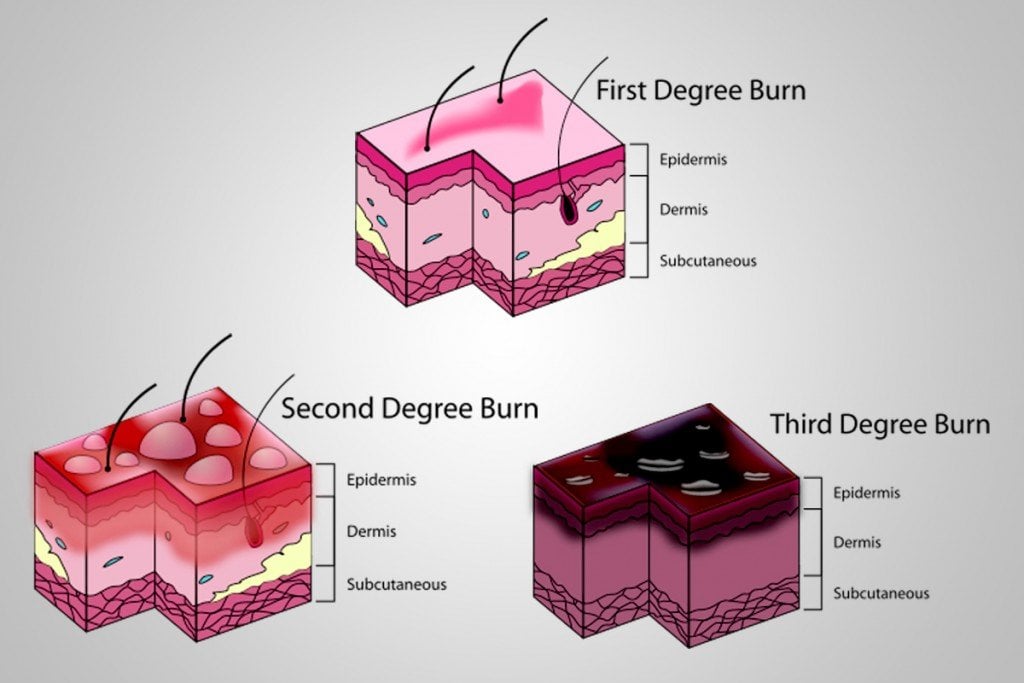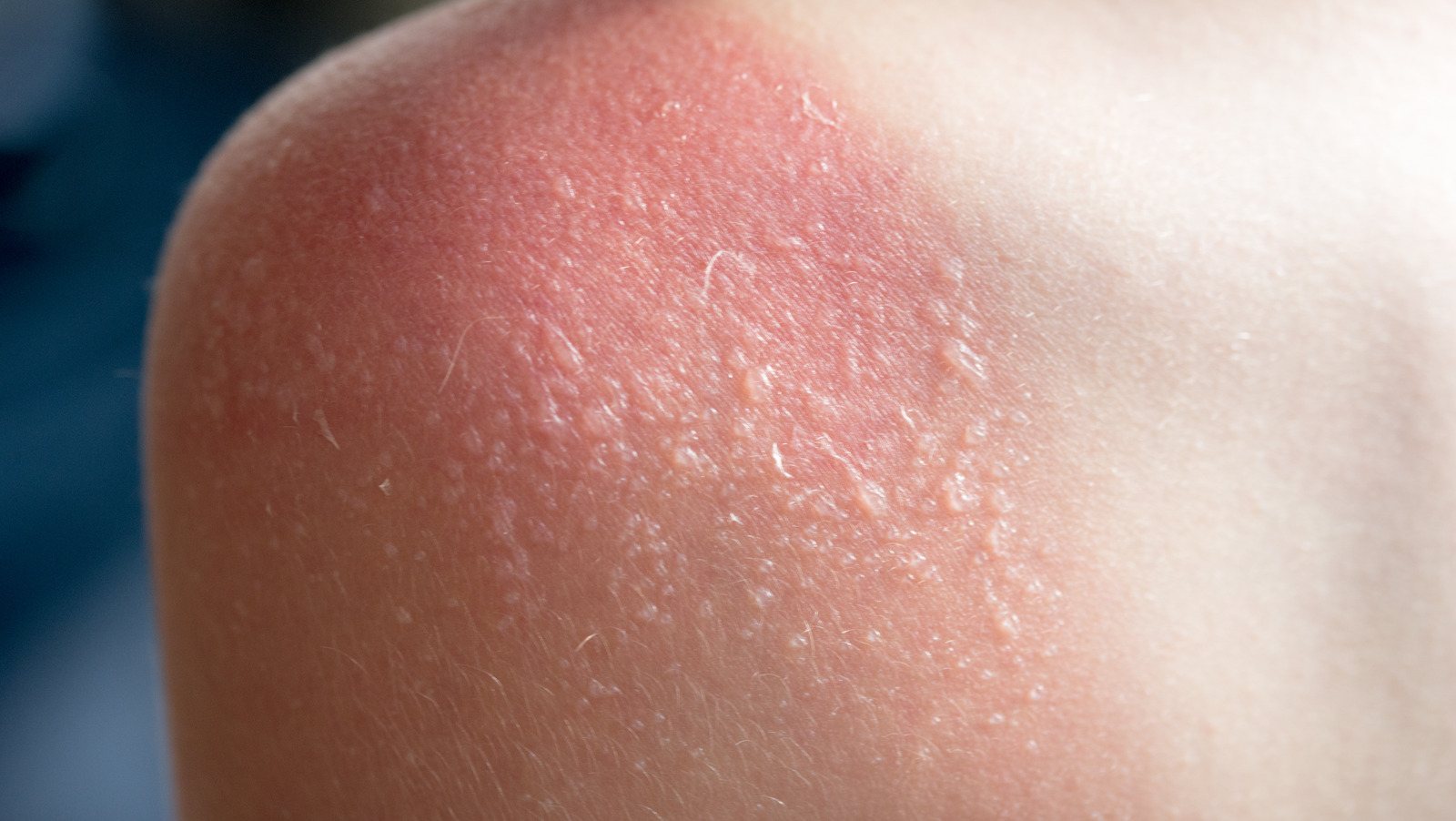

You may take an over-the-counter pain reliever like ibuprofen (Advil or Motrin), naproxen (Aleve), or acetaminophen (Tylenol).Keeping the area covered will help reduce pain and decrease the chance of tearing blisters.
#3rd degree burn blister skin
Take care to avoid putting pressure on damaged skin by wrapping the gauze loosely. Cover the burn with a sterile gauze bandage.If a blister ruptures, clean the area with mild soap and cool water and apply a thin layer of antibiotic ointment or petroleum jelly These fluid-filled pockets serve as barriers against infection. Remove jewelry, belts, and any other tight items from the burned area before swelling takes place.Alternatively, you may gently hold a cool, wet compress against the affected area until the discomfort subsides. Cool the burn as quickly as possible by holding the burned area under cool (not cold) running water.When treating first-degree burns at home, follow these 6 steps: “Treating serious burns within the first few minutes after they occur can help decrease the severity of the injury.” How do you treat minor, first-degree burns at home? “Serious burns can be life threatening and often require immediate medical attention,” said Texas MedClinic Chief Operating Officer and practicing physician Dr. Skin that appears charred or has patches of white, brown, or black.Cause the skin to appear dry and/or leathery.
 Glossy appearance due to leaking fluids. Damage that appears to penetrate deep within the skin. Symptoms of second- and third-degree burns may include: Second-degree burns involve the first two layers of skin, while third-degree burns penetrate the entire thickness of the tissue and cause permanent damage. A burn limited to an area no larger than 3 inches in diameter. These minor burns usually do not require emergency medical care and can be treated at home. Place a fire extinguisher in or near the kitchen.What are the differences in first, second and third-degree burns?įirst-degree burns are limited to the top layer of skin. Never warm baby bottles in the microwave they may heat unevenly and can burn your baby’s mouth. Keep small children and pets away from the front of the oven. Keep items such as dish towels, plastic bags, and long sleeves away from the heating surface.Never cook while holding a child or pet. Place hot liquids like soup, coffee or tea away from the edges of worktops and tables so that children cannot tip them over. Turn pot and pan handles toward the back or centre of the oven so that they cannot be knocked over, because steam can easily scald your wrists and hands. Wear protective oven gloves when taking something out of a hot oven. Don’t get distracted by phone calls, someone calling from another room, etc. Always stay in the kitchen while food is cooking. These simple tips can protect you and your family: Most of them happen in the heart of the home – the kitchen. When in doubt, seek medical advice.įortunately, many burns can be prevented. If it’s a severe third-degree burn, caused by chemicals or larger areas are affected, you need instant medical attention. Many second-degree burns will heal within a week or two if kept clean and cared for. Cover your burn with an appropriate plaster or a sterile compress to protect it from external influences. Gently dry the affected area and apply a thin layer of Elastoplast Wound Healing Ointment to support the healing process. Use the Elastoplast Wound Spray to clean from bacteria to prevent infections. Ice burns occur when ice or other extremely cold objects contact and damage the skin tissue.
Glossy appearance due to leaking fluids. Damage that appears to penetrate deep within the skin. Symptoms of second- and third-degree burns may include: Second-degree burns involve the first two layers of skin, while third-degree burns penetrate the entire thickness of the tissue and cause permanent damage. A burn limited to an area no larger than 3 inches in diameter. These minor burns usually do not require emergency medical care and can be treated at home. Place a fire extinguisher in or near the kitchen.What are the differences in first, second and third-degree burns?įirst-degree burns are limited to the top layer of skin. Never warm baby bottles in the microwave they may heat unevenly and can burn your baby’s mouth. Keep small children and pets away from the front of the oven. Keep items such as dish towels, plastic bags, and long sleeves away from the heating surface.Never cook while holding a child or pet. Place hot liquids like soup, coffee or tea away from the edges of worktops and tables so that children cannot tip them over. Turn pot and pan handles toward the back or centre of the oven so that they cannot be knocked over, because steam can easily scald your wrists and hands. Wear protective oven gloves when taking something out of a hot oven. Don’t get distracted by phone calls, someone calling from another room, etc. Always stay in the kitchen while food is cooking. These simple tips can protect you and your family: Most of them happen in the heart of the home – the kitchen. When in doubt, seek medical advice.įortunately, many burns can be prevented. If it’s a severe third-degree burn, caused by chemicals or larger areas are affected, you need instant medical attention. Many second-degree burns will heal within a week or two if kept clean and cared for. Cover your burn with an appropriate plaster or a sterile compress to protect it from external influences. Gently dry the affected area and apply a thin layer of Elastoplast Wound Healing Ointment to support the healing process. Use the Elastoplast Wound Spray to clean from bacteria to prevent infections. Ice burns occur when ice or other extremely cold objects contact and damage the skin tissue. 
Do not apply ice or extremely cold water as it could create further damage and lower the body’s temperature.Cooling the burn with water is known to relieve pain and reduce swelling, as well as preventing blisters. Cool the wound under running water for 10 to 15 minutes.Don't remove anything stuck to the skin, such as clothing.Switch off electrical appliances, fight flames or remove the source before treating the burn. Move away from the heat source and secure the danger area first.Second-degree burns can be more serious and thus require more care than first-degree burns.







 0 kommentar(er)
0 kommentar(er)
